-
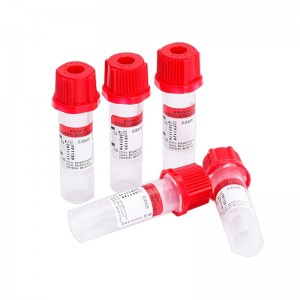
Micro Blood Collection Tubes
Micro blood collection tubes: suitable for blood collection in newborns, infants, failure patients in intensive care units, and severe burn patients who are not suitable for venous blood collection. The micro blood collection tube is a non-negative pressure tube, and its use mechanism is consistent with the vacuum blood collection tube of the same color.
-
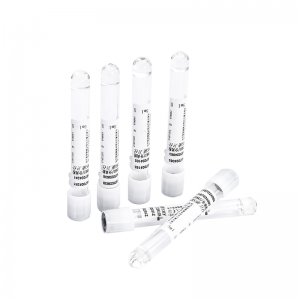
Nucleic Acid Test Tube
The white safety cap indicates that blood separation gel and EDTA-K2 has been added to the tube. After special treatment the DNA enzyme, RNA enzyme in the specimen can be removed by Co 60 irradiation sterilization to ensure product sterility in the test tube. Due to the addition of separation gel and the wall of the tube with good affinity, after the centrifuge, the inert separation glue can completely separate the liquid composition and the solid components in the blood and completely accumulate the barrier in the middle of the tube to maintain the stability of the specimens with heat resistance and stability.
-
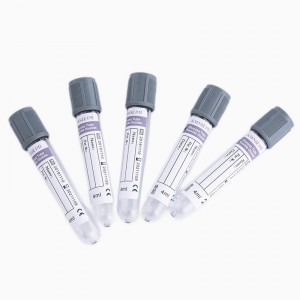
Glucose Tube
Glucose tube is used in blood collection for the test such as blood sugar, sugar tolerance, erythrocyte electrophoresis,anti-alkali hemoglobin and lactate. The added Sodium Fluoride effectively prevents metabolism of blood sugar and Sodium Heparin successfully solves the hemolysis. Thus, the original status of blood will last for long time and guarantee stable testing data of blood sugar within 72 hours. Optional additive is Sodium Fluoride+Sodium Heparin,Sodium Fluoride+ EDTA.K2, Sodium Fluoride+EDTA.Na2.
-

Heparin Sodium/ Lithium Tube
The inner wall of the blood collection tube is uniformly sprayed with heparin sodium or lithium heparin, which can quickly act on blood samples, so that high-quality plasma can be quickly obtained. In addition to the characteristics of heparin sodium,lithium heparin also has no interference with all ions including sodium ions, so it can also be used for the detection of trace elements.
-

ESR Tube
The concentration of sodium citrate is 3.8%. The volume ratio of anticoagulant vs. blood is l:4. It is normally used for blood sedimentation test. High volume of anticoagulant dilutes blood and therefore, accelerates blood sedimentation rate. Due to little volume and negative pressure inside the tube, it needs some time for blood collection. Do patiently wait until blood stops flowing into the tube.
-

PT Tube
Sodium citrate functions as anti-coagulant via chelation with calcium in blood. Concentration of sodium citrate is 3.2% and the volume ratio of anti-coagulant vs. blood is l:9. It is mainly used for coagulation test (prothrombin time, thrombin time, active partial thromboplastin time, fibrinogen). The mixing ratio is 1 part citrate to 9 parts blood.
-
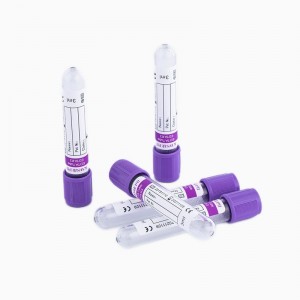
EDTAK2/EDTAK3
EDTA is an aminopolycarboxylic acid and a chelating agent that effectively sequesters calcium ion in blood. “Chelated calcium” removes calcium from the reaction site and stops endogenous or exogenous blood coagulation. Compared to other coagulants, its impact on blood cell aggregation and blood cell morphology is relatively smaller. Therefore, EDTA salts (2K, 3K) are commonly used as coagulants in routine blood testing. EDTA salts are not used in certain tests such as blood coagulation, trace elements and PCR.
-
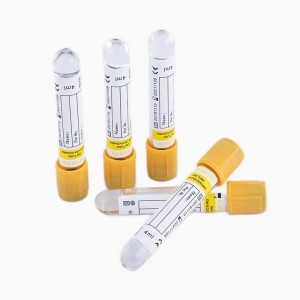
Gel & Clot Activator Tube
Coagulant is coated on the inner wall of the blood-collecting tube, accelerating blood coagulation and minimizing testing duration. Tube contains separation gel, which completely separates blood liquid component (serum) from solid component (blood cells) and aggregates both components inside the tube with barrier. Product can be used for blood biochemistry tests (liver function, renal function, myocardial enzyme function, amylase function, etc), serum electrolyte tests (serum potassium, sodium, chloride, calcium, phosphate, etc), thyroid function, AIDS, tumor markers, serum immunology, drug testing, etc.
-
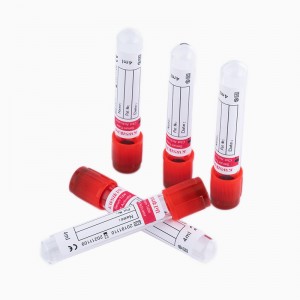
Clot Activator Tube
Coagulation tube is added with coagulant, activating thrombin and converting the soluble fibrinogen into non-soluble fibrin polymer, which further become fibrin aggregates. Coagulation tube is used for rapid biochemical analysis in the emergency setting. Our coagulation tube also contains blood glucose stabilizer and replaces the traditional blood glucose anti-coagulation tube. Thus, no anti-coagulation agent such as sodium fluoride/potassium oxalate or sodium fluoride/heparin sodium is needed for the tests of blood glucose and glucose tolerance.
-
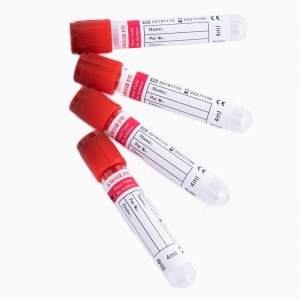
Plain Tube
Serum tube separates serum via the normal process of blood coagulation and serum can be further used after centrifugation. Serum tube is mainly used in serum tests such as serum biochemical analysis (liver function, renal function, myocardial enzymes, amylase,etc.),electrolyte analysis(serum potassium, sodium, chloride, calcium, phosphorus, etc.), thyroid function, AIDS, tumor markers and serology, drug testing, etc.










